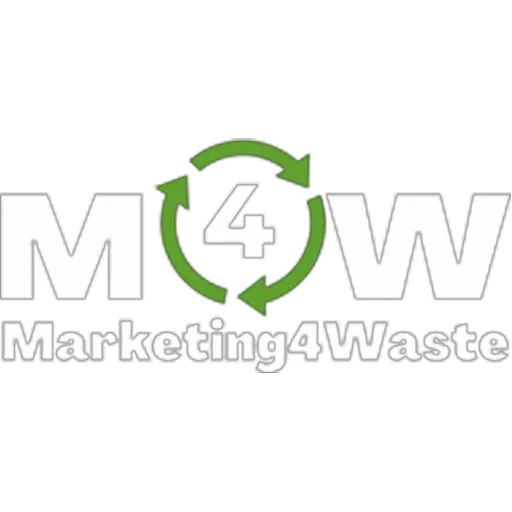Increase the Revenues of Your Waste Company With the Tips Shared in Our Blog Articles

Becoming a Supplier: The Way For Small Waste Companies to Create Wealth for Their Owners and Communities, Saving the Planet
Discover the advantages that becoming a supplier will bring to your company by moving it outside the "true millennium bug."
Fuel prices, costs of landfilling, inflation, everything seems against you and your business. Especially if you launched it in the 80s or 90s when everything was straightforward without the internet and all these technologies.
Something changed drastically after 2000.
The world was waiting for the millennium bug that didn’t happen in the first moment but happened later.
Indeed from 2000 until nowadays, you lost 80% of the value of every dollar you worked. 100 dollars in 2000 are equivalent to 182.44 dollars today.
That’s the real millennium bug.
And if you add that the competition in your market grew up due to the growth of the population, the change of needs, the new regulations, and more, it’s a miracle if your company is still in business.
Even if it is not healthy, it’s still in business.
I know you tried multiple things, copying some of the strategies implemented by big brands in the market, but they didn’t work for your company.
You wasted precious time and resources following the ideas of some business and marketing consultants that said, “I’m sure that applying that you’ll change the results.”
Unfortunately, they didn’t.
These consultants told you that the problem was due to the market, how you applied what they told you, and a lot of other bulls@@ts.
Honestly, they didn’t consider that you run a small business and that a small business cannot use and apply the same strategies big brands use.
I know they arrived at you showing big awards and medals obtained in contests dedicated to their companies, without saying that no one produced real results helping small businesses.
And they also failed with you and your money.
For that, I want to share a simple strategy to help your waste company add a revenue stream and face the challenges your business is living.
I’m talking about selling secondary raw materials, transforming your business into a company able to collect waste and junk, segregate it and identify the raw materials contained in waste.
Every single piece of waste has raw materials.
Plastic bottles, glass, the sofà you collected, the old cupboard, the old tv, and even the old plastic Christmas tree are all raw materials.
Raw materials that, if you separate at your plant, are useful for recycling and production companies.
The first step is: to start segregating all the waste you collect by type. It means wood with wood, leather with leather, iron with iron, and glass with glass. For example, dismantling a sofà, you’ll obtain wood, foam, rubber, iron, and plastic (typically 6). You can start diving into all these components.
The second step is: if there are subcategories, divide them into subtypes, if not, start to research on the web what recycling companies are interested in these types of materials.
Indeed, you can create a partnership with them, becoming their supplier.
If you don’t identify a recycling facility interested in these materials, try contacting companies that use them for their productions. In many cases, they are implementing processes to recycle these materials at their plants or, if not, they have connections with the recycling companies that supply them.
In one way or the other, you can become a supplier for these companies.
It doesn’t matter which one; what is essential is to become it to help your company to create wealth for you, your family, your team, and your community and give a big hand to the environment by saving tons of natural resources.
And remember, it’s not as daunting as it sounds. Our world has transformed. It’s no longer about simply disposing of waste. It's about seeing it as a resource, a wealth that can be mined and repurposed. In a way, you are transforming your small waste business into a treasure trove, where every scrap has value where every disposal has a potential profit margin.
Of course, like every strategy, this requires investment and patience. But what if I told you that the type of investment wouldn’t drain your pockets but rather give you a new perspective on how you run your waste business?
Yes, there are initial costs in setting up segregation units and training your manpower, but the return is manifold.
To put it in a language that resonates with you: This isn’t about spending more money on manpower; this is about empowering your existing workforce to do more. It's about making your business work smarter, not harder.
I see you shaking your head; your skepticism is understandable.
The idea of becoming a supplier may seem like a far-fetched dream. You're thinking of the costs and the training and the effort. But remember, no great journey starts without that first step.
So, let’s step into a future where your company is not only surviving but thriving.
Let's step into a future where you're not just a waste manager but a wealth generator.
Let's step into a future where your business is part of the solution, not the problem.
And let's step into a future where you're not just reducing waste but also increasing revenue, contributing to a better future for your family, your workers, and your community.
Take the leap and become a supplier.
Remember, every piece of waste is a potential source of wealth. It’s all in your hands, or better said, in your bins.
So, my friend, are you ready to turn waste into wealth?
Click here, and we'll start this journey together.
Be the Change
Sam


© 2025 Marketing4waste - All Rights Reserved,
Marketing4Waste is a brand of MiM MarketingInterimManagers LLC
+1 801 804 5730

